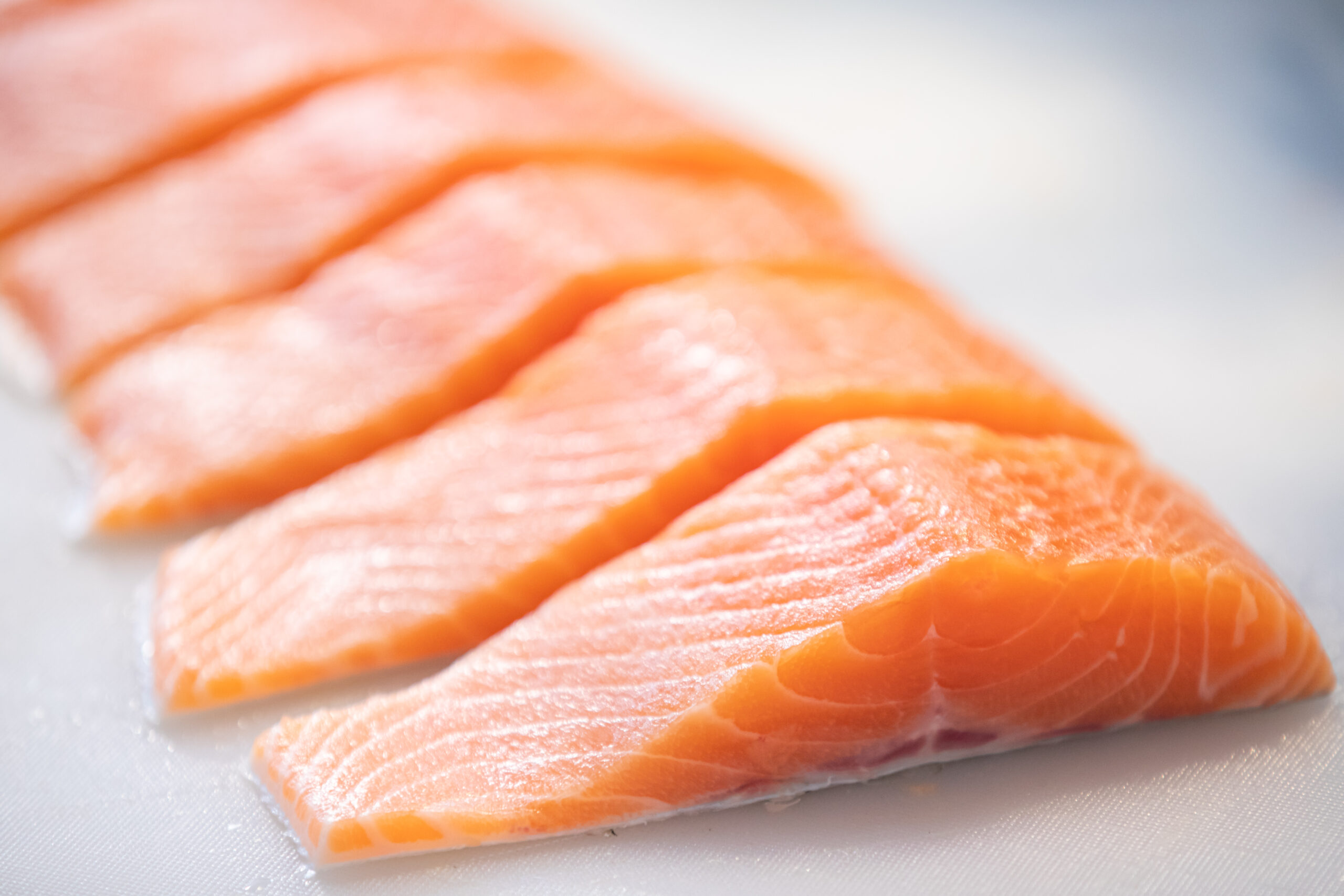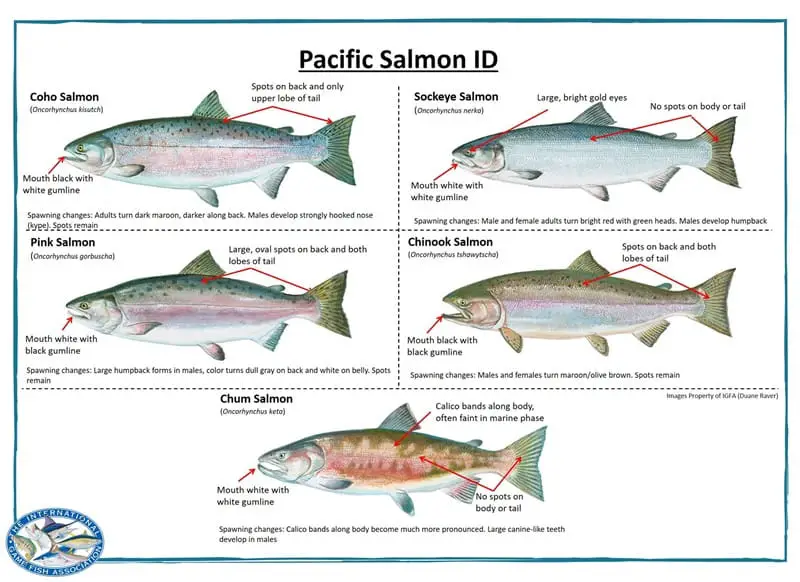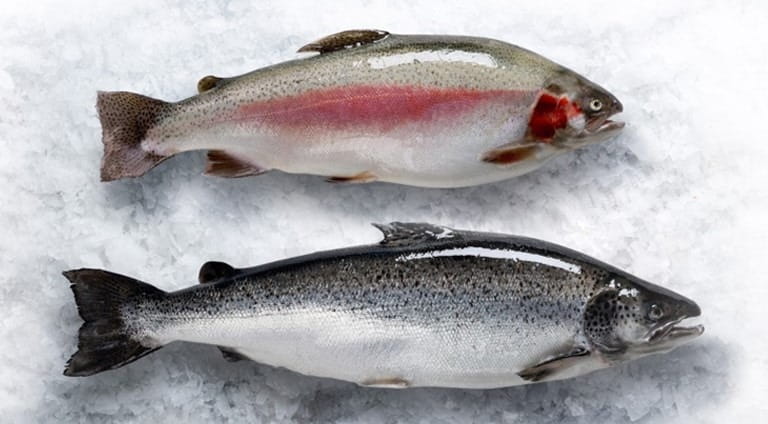Atlantic Salmon Vs Pacific Salmon: An Overview

Atlantic Salmon and Pacific Salmon are two popular types of salmon known for their unique characteristics. While both have similarities in terms of being a good source of omega-3s, protein, and nutrients, they also have distinct differences. Atlantic salmon, often referred to by its country of origin, such as Norwegian, offers a milder taste, softer texture, and lighter pink color compared to wild Pacific salmon. Pacific salmon, on the other hand, is characterized by its rich color, firmer flesh, and robust flavor. Understanding these differences can help individuals make an informed choice when selecting their preferred salmon option.
A Brief Introduction To Atlantic And Pacific Salmon
Atlantic salmon and Pacific salmon are two popular types of salmon that are widely consumed around the world. Atlantic salmon, also known as Salmo salar, is native to the Atlantic Ocean and is found in regions such as Europe and North America. On the other hand, Pacific salmon consists of various species like Chinook, Sockeye, Coho, and Pink salmon. These species are primarily found in the Pacific Ocean, particularly in North America and Asia. Both Atlantic and Pacific salmon are highly prized for their delicious taste and health benefits, making them a favorite seafood choice for many people.
Differences In Habitat And Flavor Profile
Atlantic salmon and Pacific salmon have distinct differences in their habitat and flavor profile. Atlantic salmon, native to the Atlantic Ocean, prefer cool, nutrient-rich waters and are found in regions such as Europe and North America. They have a delicate flavor and a firm, meaty texture. On the other hand, Pacific salmon species, like Chinook and Sockeye, reside in the Pacific Ocean, particularly in North America and Asia. They have a stronger flavor and a softer texture compared to Atlantic salmon. The difference in habitat and diet contributes to variations in taste and texture between the two types of salmon.
Atlantic Salmon Nutritional Benefits

Atlantic salmon is not only delicious but also offers numerous nutritional benefits. It is an excellent source of protein, which is essential for building and repairing tissues. Additionally, Atlantic salmon is rich in omega-3 fatty acids, which are known for their heart-healthy properties. These fatty acids help reduce inflammation, lower blood pressure, and improve brain function. Atlantic salmon also contains important vitamins and minerals such as vitamin D, vitamin B12, and selenium. Incorporating Atlantic salmon into your diet can provide you with these essential nutrients that contribute to overall health and well-being.
Atlantic Salmon Health Benefits And Nutritional Value
Atlantic salmon is not only delicious but also offers numerous nutritional benefits. It is an excellent source of protein, which is essential for building and repairing tissues. Additionally, Atlantic salmon is rich in omega-3 fatty acids, which are known for their heart-healthy properties. These fatty acids help reduce inflammation, lower blood pressure, and improve brain function. Atlantic salmon also contains important vitamins and minerals such as vitamin D, vitamin B12, and selenium. Incorporating Atlantic salmon into your diet can provide you with these essential nutrients that contribute to overall health and well-being .
Comparison Of Atlantic Salmon To Other Salmon Varieties
When comparing Atlantic Salmon to other salmon varieties, there are a few key differences to consider. Firstly, Atlantic salmon is known for its milder taste, softer texture, and lighter pink color compared to wild Pacific salmon. Additionally, Atlantic salmon has larger flakes in its flesh, making it ideal for certain dishes. On the other hand, other salmon varieties like Sockeye or Chinook have a richer flavor and firmer flesh. It’s important to note that the nutritional value of different salmon varieties remains similar, with all varieties being excellent sources of protein and omega-3 fatty acids.
Pacific Salmon Culinary Uses

Pacific Salmon is a versatile fish that is highly regarded for its culinary uses. Its rich flavor and firm texture make it well-suited for a variety of cooking methods. Pacific salmon can be grilled, baked, or broiled to bring out its natural flavors. It is also commonly used in sushi and sashimi due to its vibrant color and buttery taste. Additionally, Pacific salmon is a popular choice for smoking, as it absorbs the smoky flavors perfectly. Whether in salads, pasta dishes, or simply enjoyed on its own, Pacific salmon offers endless possibilities in the kitchen.
Pacific Salmon Popular Recipes And Cooking Methods
Pacific Salmon is a beloved choice for a variety of delicious recipes and cooking methods. One popular way to prepare Pacific Salmon is by grilling it, which brings out its natural flavors and imparts a smoky taste. Baking is another common method, allowing the fish to cook gently and retain its moistness. Pacific Salmon is also frequently used in sushi and sashimi, showcasing its vibrant color and buttery texture. For those who enjoy a rich and indulgent dish, pan-searing the salmon with a crisp skin is a delightful option. With its versatility, Pacific Salmon can be enjoyed in numerous culinary creations.
Pacific Salmon Flavor And Texture Analysis
Pacific Salmon is known for its distinct flavor and texture. It has a rich, buttery taste that is slightly milder compared to other salmon varieties. The flesh of Pacific Salmon is firm and meaty, with a flaky texture that melts in the mouth. This makes it perfect for grilling and baking methods, as it retains its moisture and holds up well during cooking. The flavor profile of Pacific Salmon is versatile, making it a favorite among both seafood enthusiasts and those who prefer a milder seafood taste. Its texture and flavor make it a standout choice for a variety of culinary creations.
Sustainability And Environmental Impact

Sustainability and environmental impact are crucial considerations when it comes to choosing between Atlantic and Pacific salmon. Both varieties face challenges related to fishing and farming practices. While wild-caught Pacific salmon is generally considered more sustainable, there are concerns about overfishing and habitat destruction. On the other hand, Atlantic salmon is often farmed, which can have negative consequences for water quality and ecosystem health. It is important for consumers to be aware of these issues and make informed choices to support sustainable seafood practices. By opting for sustainably sourced salmon, individuals can contribute to the long-term health of our oceans and ecosystems.
Sustainable Fishing Practices For Atlantic And Pacific Salmon
Sustainable fishing practices are crucial for both Atlantic and Pacific salmon to ensure the long-term health of their populations and the marine ecosystems they inhabit. These practices include implementing regulations to prevent overfishing, limiting catch quotas, and promoting responsible fishing techniques. In the case of Pacific salmon, efforts are made to protect their spawning grounds and habitat, as well as improving their migration routes. For Atlantic salmon, sustainable practices focus on reducing the impact of fish farms on water quality and ecosystem health. By supporting sustainable fishing practices, consumers can contribute to the conservation of these iconic species.
Environmental Considerations Of Farming And Harvesting Methods
When it comes to farming and harvesting methods, there are important environmental considerations to take into account. In the case of Atlantic salmon farming, one major concern is the potential impact on water quality due to the accumulation of waste and excess feed. Efforts have been made to mitigate this through improved filtration systems and waste management practices. Additionally, the use of antibiotics and chemicals in fish farming can have negative effects on the surrounding ecosystem. It is crucial for fish farmers to adopt sustainable practices that minimize these environmental impacts and promote the overall health of the marine environment.
Price Comparison And Availability

When it comes to price and availability, there are noticeable differences between Atlantic and Pacific salmon. Pacific salmon tends to be more expensive, with prices ranging from $15 to $25 per pound. On the other hand, Atlantic salmon is typically more affordable. Additionally, the availability of Pacific salmon is more seasonal, as it depends on the timing of the spawning season returns. In contrast, fresh Atlantic salmon from fish farms is available year-round. Considering these factors, consumers may need to consider their budget and the time of year when making their salmon purchasing choices.
Cost Variations Between Atlantic And Pacific Salmon
Cost variations between Atlantic and Pacific salmon are noticeable when it comes to purchasing these seafood options. Pacific salmon tends to be more expensive, with prices ranging from $15 to $25 per pound. On the other hand, Atlantic salmon is typically more affordable, priced at around $10 to $15 per pound. The difference in cost can be attributed to various factors, including the availability and demand for each type of salmon, as well as the farming and harvesting practices involved. Consumers should consider their budget and personal preferences when deciding between Atlantic and Pacific salmon.
Global Availability And Market Demand
Salmon is a popular seafood choice worldwide, and both Atlantic and Pacific salmon are in demand in various markets. The availability of Atlantic salmon is generally more consistent throughout the year due to fish farming practices. It can be found in grocery stores and seafood markets in many countries. On the other hand, Pacific salmon availability can be more seasonal, with specific types of Pacific salmon being more prevalent in certain regions. The market demand for both Atlantic and Pacific salmon remains high due to their versatility in various culinary preparations and their reputation as a healthy and delicious seafood option.
Conclusion

In conclusion, when comparing Atlantic salmon and Pacific salmon, the differences between the two are relatively minor. Both types of salmon offer exceptional taste and texture, making them highly sought after in the culinary world. The nutritional benefits of both varieties are also similar, providing important omega-3 fatty acids and other essential nutrients. The choice between Atlantic and Pacific salmon ultimately comes down to personal preference and availability. Whether you prefer the slightly milder flavor of Atlantic salmon or the robust flavor of Pacific salmon, both options are delicious and nutritious additions to any seafood menu.
Key Differences And Similarities Between Atlantic And Pacific Salmon
Atlantic and Pacific salmon have their own unique characteristics, but they also share some similarities. In terms of differences, Atlantic salmon has a milder taste, softer texture, and lighter pink color compared to wild Pacific salmon. It also has larger flakes in its flesh. Pacific salmon, on the other hand, has a richer color, firmer flesh, and a more robust flavor. In terms of similarities, both types of salmon provide important omega-3 fatty acids, protein, and nutrients. They are both highly sought after in the culinary world and offer delicious taste and texture options for seafood lovers.
Recommendations For Choosing The Best Salmon Option
When it comes to choosing the best salmon option, there are a few recommendations to keep in mind. Firstly, consider the source of the salmon. Wild-caught salmon, particularly from sustainable fisheries like those in Alaska, is generally considered the healthier and more environmentally friendly choice. Secondly, look for salmon that is fresh and has a vibrant color. Avoid any salmon with a strong fishy odor or discolored flesh. Lastly, consider your personal preferences in terms of flavor and texture. Atlantic salmon is milder and softer, while Pacific salmon offers a richer flavor and firmer texture. Overall, selecting the best salmon option depends on your taste preferences, sustainability concerns, and availability in your region.
FAQ About Atlantic Salmon Vs Pacific: A Salmon Seafood Showdown
Q: What is the main difference between Atlantic salmon and Pacific salmon?
A: The key difference lies in their habitat. Atlantic salmon primarily inhabit the North Atlantic Ocean, while Pacific salmon species are native to the waters of the Pacific Ocean.
Q: How do the taste and texture of Atlantic salmon and Pacific salmon compare?
A: Atlantic salmon tend to have a milder flavor and softer texture compared to the more robust taste and firmer texture typically found in Pacific salmon varieties.
Q: Which is more commonly available in supermarkets – Atlantic salmon or Pacific salmon?
A: Atlantic salmon is more commonly available in supermarkets due to its widespread aquaculture, making it more readily accessible to consumers compared to the primarily wild-caught Pacific salmon.
Q: Are there any nutritional differences between Atlantic salmon and Pacific salmon?
A: While both types of salmon are rich in omega-3 fatty acids and protein, Pacific salmon generally contains higher levels of these nutrients due to their wild-caught nature and natural diet in the ocean.
Q: Can Atlantic salmon and Pacific salmon be used interchangeably in recipes?
A: Yes, both types of salmon can be used interchangeably in many recipes such as grilling, baking, or pan-searing. The choice between the two may come down to personal preference for flavor and texture.
Q: Are there any sustainability concerns regarding the production of Atlantic salmon and Pacific salmon?
A: Yes, there are sustainability concerns surrounding both Atlantic and Pacific salmon production. Overfishing, habitat degradation, and disease outbreaks are some of the challenges that need to be addressed to ensure the long-term sustainability of salmon fisheries.

Panda Cafe offers delicious dining and takeout to Fairfax, VA.
Panda Cafe is a cornerstone in the Fairfax community and has been recognized for its outstanding Chinese cuisine, excellent service, and friendly staff.